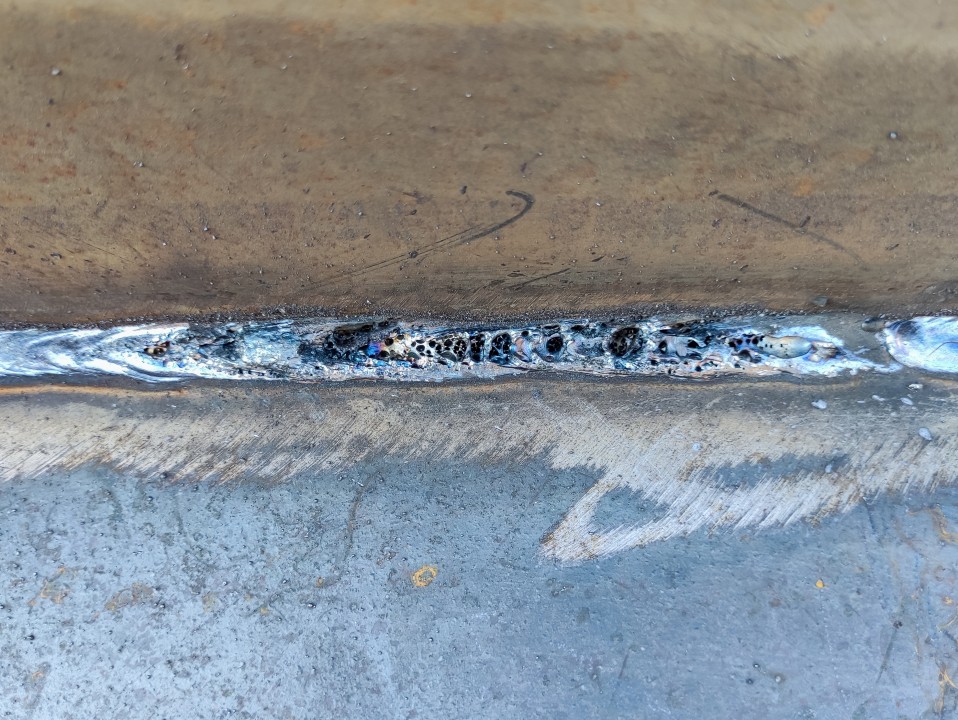Expert Suggestions on What is Porosity in Welding and Just How to Resolve It
Expert Suggestions on What is Porosity in Welding and Just How to Resolve It
Blog Article
Porosity in Welding: Identifying Common Issues and Implementing Finest Practices for Avoidance
Porosity in welding is a pervasive issue that usually goes unnoticed till it creates significant troubles with the stability of welds. In this discussion, we will certainly explore the vital variables adding to porosity development, examine its damaging impacts on weld performance, and discuss the best techniques that can be embraced to reduce porosity incident in welding processes.
Typical Reasons For Porosity

Making use of dirty or wet filler materials can present contaminations into the weld, adding to porosity issues. To reduce these common causes of porosity, extensive cleansing of base metals, proper protecting gas option, and adherence to ideal welding parameters are crucial practices in accomplishing top quality, porosity-free welds.
Influence of Porosity on Weld Quality

The presence of porosity in welding can substantially jeopardize the structural integrity and mechanical residential properties of welded joints. Porosity develops spaces within the weld steel, damaging its total stamina and load-bearing capability.
Welds with high porosity levels often tend to exhibit lower impact toughness and lowered ability to deform plastically before fracturing. Porosity can hamper the weld's capacity to effectively transmit pressures, leading to early weld failure and prospective safety and security threats in essential frameworks.
Best Practices for Porosity Avoidance
To improve the structural honesty and top quality of welded joints, what particular actions can be executed to decrease the occurrence of porosity throughout the welding procedure? Using the appropriate welding method for the particular material try here being welded, over here such as readjusting the welding angle and gun setting, can even more prevent porosity. Normal examination of welds and immediate remediation of any concerns identified throughout the welding procedure are crucial methods to prevent porosity and generate premium welds.
Value of Appropriate Welding Techniques
Implementing correct welding methods is paramount in guaranteeing the structural integrity and top quality of welded joints, building upon the structure of efficient porosity prevention actions. Extreme heat can lead to raised porosity due to the entrapment of gases in the weld swimming pool. Additionally, making use of the suitable welding specifications, such as voltage, existing, and take a trip rate, is critical for achieving sound welds with marginal porosity.
Furthermore, the selection of welding procedure, whether it be MIG, TIG, or stick welding, ought to align with the certain demands of the task to guarantee ideal outcomes. Proper cleaning and preparation of the base metal, in addition to choosing the best filler material, are additionally necessary elements of efficient welding strategies. By sticking to these best methods, welders can lessen the additional hints danger of porosity formation and generate high-quality, structurally audio welds.

Checking and Quality Assurance Procedures
Evaluating procedures are necessary to discover and prevent porosity in welding, making certain the strength and longevity of the last item. Non-destructive testing approaches such as ultrasonic screening, radiographic testing, and aesthetic examination are commonly utilized to recognize prospective issues like porosity.
Post-weld assessments, on the other hand, assess the last weld for any defects, including porosity, and verify that it meets defined criteria. Implementing an extensive quality control strategy that includes extensive screening procedures and inspections is paramount to minimizing porosity issues and guaranteeing the total high quality of bonded joints.
Conclusion
Finally, porosity in welding can be a common issue that influences the quality of welds. By determining the common reasons for porosity and implementing best techniques for prevention, such as correct welding techniques and screening procedures, welders can ensure high quality and trusted welds. It is vital to prioritize avoidance methods to minimize the event of porosity and maintain the integrity of welded frameworks.
Report this page